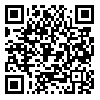Volume 8, Issue 1 (1-2004)
IBJ 2004, 8(1): 33-39 |
Back to browse issues page
Download citation:
BibTeX | RIS | EndNote | Medlars | ProCite | Reference Manager | RefWorks
Send citation to:



BibTeX | RIS | EndNote | Medlars | ProCite | Reference Manager | RefWorks
Send citation to:
Mahmoodi M, V. Gardiner J, S. Lotfi A, R. Bloom S. The Demonstration of Polyethylenimine Mediated Gene Transfer into the Rodent Hypothalamus Results in Persistent Over-Expression and Phenotypic Change. IBJ 2004; 8 (1) :33-39
URL: http://ibj.pasteur.ac.ir/article-1-509-en.html
URL: http://ibj.pasteur.ac.ir/article-1-509-en.html
Abstract:
Polyethylenimine (PEI) has been proposed as a non-viral vector, and has been successfully used to transfer reporter genes into the central nervous system (CNS), kidneys, and lungs of adult mice. Neuropeptide Y (NPY) is a peptide expressed in the hypothalamus and is important in the regulation of body weight. Using PEI combined with stereotactic microinjection, we have successfully transferred cDNA-encoding NPY driven by the cytomegalovirus (CMV) promoter into the arcuate nucleus of adult male Wistar rats. Animals treated with NPY expressing plasmids (pNPY) gained more weight than the controls (p<0.05), with associated increases in food intake (p<0.05) and decreased brown adipose tissue activity, measured by Guanosine Diphosphate (GDP) binding to mitochondria, (p<0.05). In a separate study, hypothalamic slices from the rats treated with pNPY/PEI showed increased NPY release (pNPY 9.7 ± 0.3 fmol/l vs. control 8.3 ± 0.5 fmol/l, p<0.05, n = 3). These results suggest that PEI is an effective vector for gene transfer into the rodent brain and can increase the protein production sufficient to result a persistent phenotypic change. This technique offers the potential of a simple and effective method to manipulate gene expression localised to specific regions of the adult rodent brain
Type of Study: Full Length/Original Article |
| Rights and permissions | |
 |
This work is licensed under a Creative Commons Attribution-NonCommercial 4.0 International License. |







.png)
